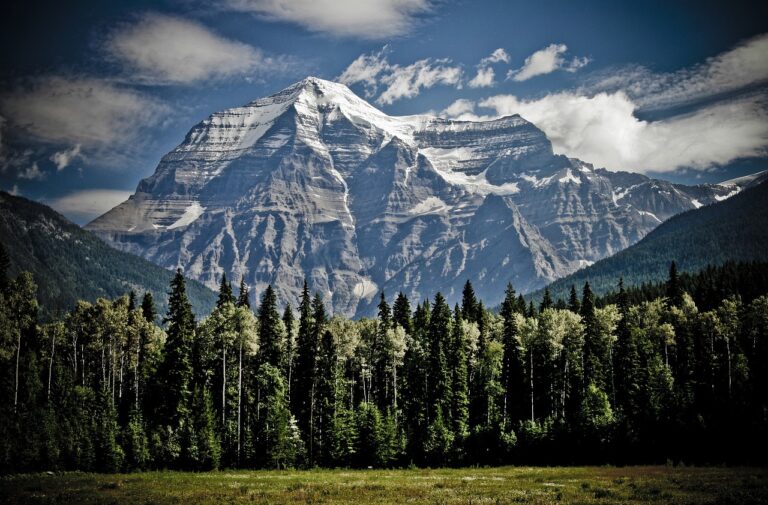
Introduction
Adventure travel and extreme sports have become increasingly popular in recent years, with many people seeking out thrilling and exciting experiences in some of the most remote and breathtaking locations around the world. From mountain climbing and white-water rafting to bungee jumping and skydiving, there is no shortage of adrenaline-pumping activities for those who are brave enough to take them on.
With advances in technology and the increasing accessibility of remote destinations, adventure travel and extreme sports have become more accessible than ever before, allowing people to push their limits and experience the world in a whole new way. In this fast-paced world, adventure travel and extreme sports offer a unique opportunity to disconnect from the stress of everyday life and connect with nature, challenge oneself physically and mentally, and create unforgettable memories that will last a lifetime.
What is Adventure Travel and Extreme Sports?
Adventure travel involves activities that take place in outdoor environments and involve an element of risk or excitement. This can include activities like hiking, rock climbing, surfing, and snowboarding. Extreme sports are high-risk, high-energy activities that often involve speed, height, or other extreme conditions. Examples include skydiving, bungee jumping, and snowboarding. Both adventure travel and extreme sports offer participants the opportunity to explore new environments and push their limits.
A Brief History of Adventure Travel and Extreme Sports
The history of adventure travel can be traced back to the rise of outdoor recreation and leisure activities in the 19th and 20th centuries. People began to spend more time in nature and seek out new ways to experience it. In the mid-20th century, new technologies and a desire to push boundaries led to the development of extreme sports like snowboarding and skateboarding. Over time, both adventure travel and extreme sports have continued to evolve and grow in popularity.
The Popularity of Adventure Travel and Extreme Sports
Adventure travel and extreme sports have become increasingly popular over time, with more and more people seeking out these experiences. People are drawn to the challenge and excitement of these activities, as well as the opportunity to explore new environments and cultures. The demographics of adventure travelers and extreme sports enthusiasts are diverse, with people from all walks of life participating. These activities also have an economic impact, contributing to the tourism industry and local economies.
The Culture of Adventure Travel and Extreme Sports
Adventure travel and extreme sports have their own unique cultures, values, and beliefs. Participants are often driven by a desire to push themselves to their limits and explore new environments. Social and environmental responsibility are also important values within these communities, with many participants working to promote sustainability and conservation. Within adventure travel and extreme sports, there are also subcultures and communities that approach these activities differently.

Types of Adventure Travel and Extreme Sports
I. Land-based Activities
Hiking and Trekking: Walking or trekking through challenging terrain, often involving multi-day trips with camping and self-sufficiency. Popular destinations for hiking and trekking include the Himalayas, the Andes, and the Appalachian Trail in the United States.
Rock Climbing: Climbing up rock formations or artificial walls, requires strength, technique, and mental focus. Popular locations for rock climbing include Yosemite National Park in the United States, Mount Arapiles in Australia, and the limestone cliffs of Krabi in Thailand.
Mountain Biking: Riding bicycles off-road through challenging terrain, often with steep ascents and descents. Popular destinations for mountain biking include Moab in Utah, the Scottish Highlands, and the Swiss Alps.
Trail Running: Running or jogging through natural trails, often with varied terrain and obstacles. Popular destinations for trail running include the Ultra-Trail du Mont-Blanc in Europe, the Western States Endurance Run in California, and the Tarawera Ultramarathon in New Zealand.

II. Water-based Activities
Whitewater Rafting: Riding inflatable rafts down rapids and other fast-moving sections of rivers, often with trained guides. Popular destinations for whitewater rafting include the Grand Canyon in the United States, the Zambezi River in Africa, and the Futaleufú River in Chile.
Surfing: Riding waves on a board, requiring skill and balance. Popular surfing destinations include Hawaii, Bali, and the Gold Coast in Australia.
Scuba Diving: Diving underwater with breathing equipment, exploring coral reefs and other underwater landscapes. Popular scuba diving destinations include the Great Barrier Reef in Australia, the Red Sea in Egypt, and the Blue Hole in Belize.
Kayaking: Paddling a small boat through rapids, whitewater, or calm water, often with self-sufficiency. Popular kayaking destinations include the Grand Canyon in the United States, the fjords of Norway, and the Whanganui River in New Zealand.

III. Air-based Activities
Paragliding: Flying through the air with a fabric wing and a harness, often launched from high altitude. Popular paragliding destinations include the Himalayas, the Swiss Alps, and Rio de Janeiro in Brazil.
Skydiving: Jumping from an airplane and free-falling before deploying a parachute, often with trained instructors. Popular skydiving destinations include Dubai, New Zealand, and the Swiss Alps.
BASE Jumping: Jumping from a fixed structure like a bridge or building, often with a parachute or wingsuit. BASE jumping is a highly dangerous and often illegal activity, but is popular among extreme sports enthusiasts.
Wingsuit Flying: Flying through the air with a wingsuit that allows for gliding and controlled descent, often in conjunction with BASE jumping. Popular wingsuit flying locations include the Lauterbrunnen Valley in Switzerland, the ENSA couloir in France, and the Jebel Jais mountain in the United Arab Emirates.
Choosing an Adventure Travel Destination
Adventure travel is all about experiencing new challenges and discovering hidden treasures in destinations that are off the beaten path. However, choosing the right adventure travel destination requires some research and planning. In this section, we’ll discuss some factors to consider when selecting a destination, as well as some top adventure travel destinations around the world.
I. Factors to Consider When Selecting a Destination
Activities: The first step in choosing an adventure travel destination is to identify the type of adventure you’re interested in. Whether it’s hiking, surfing, or mountain biking, you’ll want to choose a destination that offers the activities you’re interested in.
Difficulty level: The next factor to consider is the difficulty level of the activities you’re interested in. Some destinations offer more challenging activities for experienced adventurers, while others are better suited for beginners.
Safety: Safety should always be a top priority when choosing an adventure travel destination. Research the crime rate, political stability, and natural hazards in the area to ensure that you’ll be safe during your trip.
Climate: The climate of the destination can have a big impact on the types of activities you can do, as well as the best time of year to visit. Make sure to research the climate and weather patterns of the destination before booking your trip.
Cultural and linguistic barriers: If you’re traveling to a destination where you don’t speak the language or aren’t familiar with the local customs, it can be helpful to hire a guide or tour operator to ensure that you have a safe and enjoyable trip.

II. Top Adventure Travel Destinations Around the World
Patagonia, Chile, and Argentina: Known for its stunning mountains, glaciers, and forests, Patagonia is a popular destination for hiking, camping, and wildlife viewing.
New Zealand: With its rugged coastline, mountains, and glaciers, New Zealand is a mecca for adventure travelers. Activities include hiking, mountain biking, skiing, and bungee jumping.
Costa Rica: This Central American country is known for its lush rainforests, volcanoes, and beaches. Popular adventure activities include zip-lining, white-water rafting, and surfing.
Iceland: Iceland’s stunning landscapes, including waterfalls, geysers, and glaciers, make it a top destination for adventure travelers. Activities include hiking, ice climbing, and hot spring soaking.
Nepal: Home to Mount Everest and the Himalayas, Nepal is a top destination for trekkers and climbers. Other adventure activities include paragliding, white-water rafting, and wildlife viewing.
Choosing an adventure travel destination requires some research and consideration of factors like activities, difficulty level, safety, climate, and cultural and linguistic barriers. By keeping these factors in mind and choosing a destination that matches your interests and skill level, you can have a safe and rewarding adventure travel experience.
Safety and Risk Management
Adventure travel and extreme sports come with inherent risks, but with the right precautions, you can reduce your chances of injury or accident. In this section, we’ll discuss some strategies for understanding and mitigating risk, as well as equipment and safety gear to consider. We’ll also explore how to find reputable tour operators and guides to help ensure a safe adventure travel experience.
I. Understanding and mitigating risk:
Before embarking on an adventure travel or extreme sports experience, it’s important to understand the risks involved and take steps to mitigate those risks. This may include researching the activity, the location, and the weather conditions, as well as developing a plan for emergency situations.
II. Equipment and safety gear:
Having the right equipment and safety gear is essential for minimizing risk in adventure travel and extreme sports. This may include helmets, harnesses, life jackets, and other protective gear. It’s important to make sure that the equipment is in good condition and properly fitted before use.
III. Finding reputable tour operators and guides:
Tour operators and guides can play a key role in ensuring a safe adventure travel experience. It’s important to do your research and choose a reputable operator or guide who has experience in the activity and location you’re interested in. Look for reviews and ask for recommendations from other travelers or adventure sports communities.
IV. Training and certification:
For some adventure sports, such as scuba diving or rock climbing, it may be necessary to undergo training and obtain certification before participating. This can help ensure that you have the necessary skills and knowledge to participate safely.
V. Insurance:
Even with the best precautions, accidents can happen. It’s important to have travel insurance that includes coverage for adventure travel and extreme sports, in case of injury or emergency.

Training and Preparation
Adventure travel and extreme sports often require physical and mental strength and endurance. In this section, we’ll discuss the importance of physical and mental preparation, as well as training programs and resources to help you prepare for your adventure.
I. Physical and mental preparation
Physical preparation: Depending on the activity, adventure travel, and extreme sports can require a high level of physical fitness. It’s important to assess your current fitness level and develop a training plan to build strength, endurance, and flexibility. This may include cardiovascular exercises, strength training, and mobility work.
Mental preparation: Adventure travel and extreme sports can also be mentally challenging. It’s important to prepare yourself mentally by developing a positive mindset, managing stress, and learning techniques for staying calm and focused under pressure.
II. Training programs and resources
Online resources: There are many online resources available for training and preparing for adventure travel and extreme sports. These may include training plans, instructional videos, and advice from experienced athletes.
Local training facilities: Depending on the activity, you may be able to find local training facilities or gyms that offer specialized training programs for adventure sports. These may include rock climbing gyms, martial arts studios, or surf schools.
Private coaches: For more personalized training, you may want to consider working with a private coach or trainer. A coach can help you develop a customized training plan and provide feedback and guidance as you progress.
Group training: Joining a group or team can also be a great way to train for adventure travel and extreme sports. Not only can you benefit from the expertise of others, but you can also build camaraderie and motivation to help you reach your goals.

The Benefits of Adventure Travel and Extreme Sports
Adventure travel and extreme sports can provide many benefits beyond just the thrill of the experience. In this section, we’ll explore the various physical, mental, and personal benefits of participating in adventure travel and extreme sports.
I. Physical and mental health benefits
Physical benefits: Adventure travel and extreme sports require physical activity and can provide a great workout. Depending on the activity, you may improve your cardiovascular health, build strength and endurance, and improve your flexibility and coordination.
Mental benefits: Adventure travel and extreme sports can also provide mental health benefits. They can help reduce stress and anxiety, improve self-esteem and confidence, and promote a sense of well-being and happiness.
II. Personal growth and self-discovery
Overcoming challenges: Adventure travel and extreme sports often involve challenges and obstacles that require mental and physical strength to overcome. By facing and conquering these challenges, you can develop resilience, confidence, and a sense of accomplishment.
Self-discovery: Adventure travel and extreme sports can also be an opportunity for self-discovery and personal growth. They can help you better understand your strengths and weaknesses, push your limits, and gain a new perspective on life.
III. Positive impact on the environment and local communities
Sustainable tourism: Adventure travel and extreme sports can be a form of sustainable tourism. By choosing eco-friendly activities and supporting local businesses, you can help reduce the negative impact of tourism on the environment and local communities.
Cultural exchange: Adventure travel and extreme sports can also provide opportunities for cultural exchange and learning. By interacting with locals and experiencing new cultures, you can gain a greater appreciation and understanding of the world around you.
In conclusion, adventure travel and extreme sports can provide many benefits beyond just the excitement of the experience. They can improve your physical and mental health, foster personal growth and self-discovery, and have a positive impact on the environment and local communities. So, whether you’re a seasoned adventurer or a first-time participant, consider the many benefits of adventure travel and extreme sports as you plan your next trip.

The Future of Adventure Travel and Extreme Sports
Adventure travel and extreme sports have come a long way in recent years and are expected to continue evolving in the future. In this section, we’ll explore some of the emerging trends and technologies in the industry, as well as the importance of ethical and sustainable practices.
I. Emerging trends and technologies
Virtual reality: Virtual reality technology is becoming more prevalent in the adventure travel and extreme sports industry. This allows individuals to experience the thrill of the activity without leaving their homes.
Adventure travel apps: There are now numerous adventure travel apps available that allow individuals to find and book activities, connect with other travelers, and track their adventures.
New activities: As technology continues to evolve, new activities are emerging in the adventure travel and extreme sports industry. For example, there are now activities such as drone racing, virtual reality surfing, and jetpack flying.
II. Ethical and sustainable practices
Environmental impact: With the increasing popularity of adventure travel and extreme sports, it’s important to consider the environmental impact of these activities. Sustainable tourism practices, such as using eco-friendly equipment and supporting local businesses, are becoming more important.
Local communities: The industry is also beginning to focus on the importance of supporting local communities. This includes hiring local guides and operators, as well as ensuring that activities do not negatively impact local cultures and traditions.

Conclusion
Adventure travel and extreme sports can provide numerous physical and mental health benefits, as well as personal growth and self-discovery. These activities challenge individuals to step outside their comfort zones, confront fears and limitations, and push themselves to new heights. Whether it’s rock climbing, white water rafting, or skydiving, the rush of adrenaline and a sense of accomplishment can have a profound impact on one’s overall well-being.
Choosing the right destination, understanding and mitigating risk, and having the proper training and equipment are essential for a safe and enjoyable experience. It’s important to research the destination’s weather, political stability, and local customs and laws, as well as to assess the level of risk associated with the activity. Having the proper equipment and safety gear, as well as being trained in its use, can also minimize risk and increase enjoyment.
Ethical and sustainable practices, such as supporting local communities and reducing environmental impact, are becoming increasingly important in the industry. The tourism industry, including adventure travel and extreme sports, can have a significant impact on the environment and local communities. By supporting local businesses and organizations, reducing waste and pollution, and respecting cultural traditions and natural resources, we can help to ensure that these activities have a positive impact on individuals and the world around us.
Emerging technologies and activities are continuously changing the adventure travel and extreme sports landscape. From virtual reality experiences to new types of extreme sports, there is always something new and exciting to explore. However, it’s important to assess the safety and risk associated with these emerging activities and to ensure that they align with one’s personal values and goals.
Adventure travel and extreme sports can be thrilling and rewarding experiences, but it’s important to prioritize safety and proper preparation. Researching and choosing a reputable tour operator or guide can make all the difference in ensuring a safe and enjoyable experience. By practicing ethical and sustainable tourism, we can ensure that adventure travel and extreme sports continue to have a positive impact on individuals and the world around us.
Finally, we encourage everyone to embrace the spirit of adventure and explore the world in new and exciting ways, while always keeping safety and respect for the environment and local communities at the forefront of our minds. Adventure travel and extreme sports offer a world of possibilities for those seeking to push their limits, explore new horizons, and discover their own capabilities.
Read more articles here.





